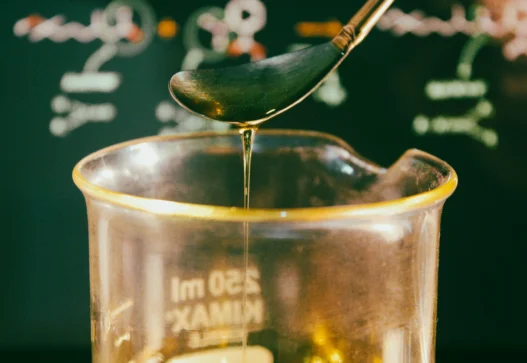1-Ethylpiperidine is a chemical compound that serves as a building block in the synthesis of various pharmaceuticals, agrochemicals, and specialty chemicals. Its applications extend to the development of medications for treating conditions such as Parkinson’s disease, Alzheimer’s disease, and hypertension. Furthermore, it is utilized in the manufacturing of insecticides, herbicides, and other agricultural products. In essence, 1-Ethylpiperidine plays a crucial role in advancing medical research, improving crop yields, and enhancing overall quality of life.
Table of Contents:
- 💡 Commercial Applications
- ⚗️ Chemical & Physical Properties
- 🏭 Production & Procurement
- ⚠️ Safety Considerations
- 🔬 Potential Research Directions
- 🧪 Related Compounds
💡 Commercial Applications
1-Ethylpiperidine has a variety of commercial and industrial applications. It is commonly used as a building block in the synthesis of pharmaceuticals, agrochemicals, and other fine chemicals. Its unique chemical structure and properties make it valuable in organic synthesis processes.
In the industrial sector, 1-Ethylpiperidine is used as a solvent for resins, cellulose esters, and other polymers. It is also utilized in dyeing and printing processes. Additionally, this compound is employed as a corrosion inhibitor for metal surfaces in various industrial applications.
In the realm of drug and medication applications, 1-Ethylpiperidine is used in the synthesis of certain pharmaceuticals. It serves as an important intermediate in the production of drugs for neurological disorders and analgesics. The compound’s chemical properties play a crucial role in the development of these therapeutic agents.
⚗️ Chemical & Physical Properties
1-Ethylpiperidine is a colorless liquid with a pungent odor. It is often described as having a fishy or ammonia-like smell.
The molar mass of 1-Ethylpiperidine is approximately 113.2 g/mol, with a density of about 0.82 g/cm³. Comparatively, common food items such as water (18.015 g/mol, 1 g/cm³) and sugar (342.3 g/mol, 1.59 g/cm³) have lower molar mass and higher density, respectively.
1-Ethylpiperidine has a melting point of around -55°C and a boiling point of about 142°C. In comparison, common food items like butter (melting point of 32-35°C) and water (boiling point of 100°C) have significantly different melting and boiling points.
1-Ethylpiperidine is sparingly soluble in water and has a low viscosity. When compared to common food items like salt (high solubility in water) and honey (high viscosity), 1-Ethylpiperidine exhibits differences in both solubility and viscosity.
🏭 Production & Procurement
1-Ethylpiperidine is typically produced through a series of chemical reactions involving piperidine and ethyl bromide. The process involves mixing these two compounds in a suitable solvent and subjecting them to heat and pressure to facilitate the reaction. This results in the formation of 1-Ethylpiperidine as a final product.
When it comes to procurement, 1-Ethylpiperidine can be obtained from chemical suppliers who specialize in providing a range of organic compounds. The compound is often available in liquid form in varying quantities, depending on the needs of the purchaser. Transportation of 1-Ethylpiperidine is typically done in sealed containers to prevent leakage and ensure safe handling.
For international procurement of 1-Ethylpiperidine, importers must adhere to regulations set forth by customs authorities regarding the transportation of hazardous chemicals. Proper documentation and labeling are essential to ensure compliance with international standards for the safe handling and transportation of such compounds. The use of authorized carriers and proper packaging methods are crucial to prevent any environmental or safety hazards during transit.
⚠️ Safety Considerations
Safety considerations for 1-Ethylpiperidine include handling the chemical in a well-ventilated area to prevent inhalation of vapors, wearing appropriate personal protective equipment such as gloves and goggles to avoid skin contact and eye irritation, and storing the substance in a secure location away from incompatible materials to prevent accidents or chemical reactions.
Hazard statements for 1-Ethylpiperidine include “Causes skin irritation,” “Causes serious eye irritation,” and “May cause respiratory irritation.” These statements indicate the potential risks associated with exposure to the chemical, highlighting the importance of taking proper precautions to prevent harm to individuals who may come into contact with it.
Precautionary statements for 1-Ethylpiperidine include “Keep out of reach of children,” “Avoid breathing vapors, mist, or spray,” and “Wear protective gloves/eye protection/face protection.” These statements provide specific recommendations for handling the chemical safely, emphasizing the importance of proper storage, personal protective equipment, and ventilation to minimize the risk of harmful exposure.
🔬 Potential Research Directions
Potential research directions for 1-Ethylpiperidine may include its pharmacological properties and potential as a drug candidate. Studies could explore its interactions with various receptors and enzymes in the central nervous system to assess its potential therapeutic applications.
Further investigations on the synthesis and purification methods of 1-Ethylpiperidine could be conducted to optimize its production on a larger scale. These studies could focus on developing more efficient and environmentally friendly processes to enhance the overall yield and purity of the compound.
Research on the chemical reactivity of 1-Ethylpiperidine could shed light on its potential for use in organic synthesis, such as in the construction of complex molecular structures. Understanding its reactivity with various functional groups could open up new avenues for the development of novel chemical transformations.
🧪 Related Compounds
1-Ethylpiperidine belongs to a class of compounds known as piperidines, which contain a six-membered ring with five carbon atoms and one nitrogen atom. Similar compounds to 1-Ethylpiperidine include 1-Methylpiperidine, which has a methyl group in place of the ethyl group, and 1-Propylpiperidine, which has a propyl group in place of the ethyl group.
1-Methylpiperidine, also known as N-methylpiperidine, differs from 1-Ethylpiperidine by the substitution of a methyl group for the ethyl group. This small change in molecular structure results in different chemical and physical properties, such as boiling point and solubility.
1-Propylpiperidine, also known as N-propylpiperidine, differs from 1-Ethylpiperidine by the substitution of a propyl group for the ethyl group. Like 1-Methylpiperidine, this substitution leads to differences in chemical and physical properties. The longer propyl chain may affect factors such as lipophilicity and reactivity.









